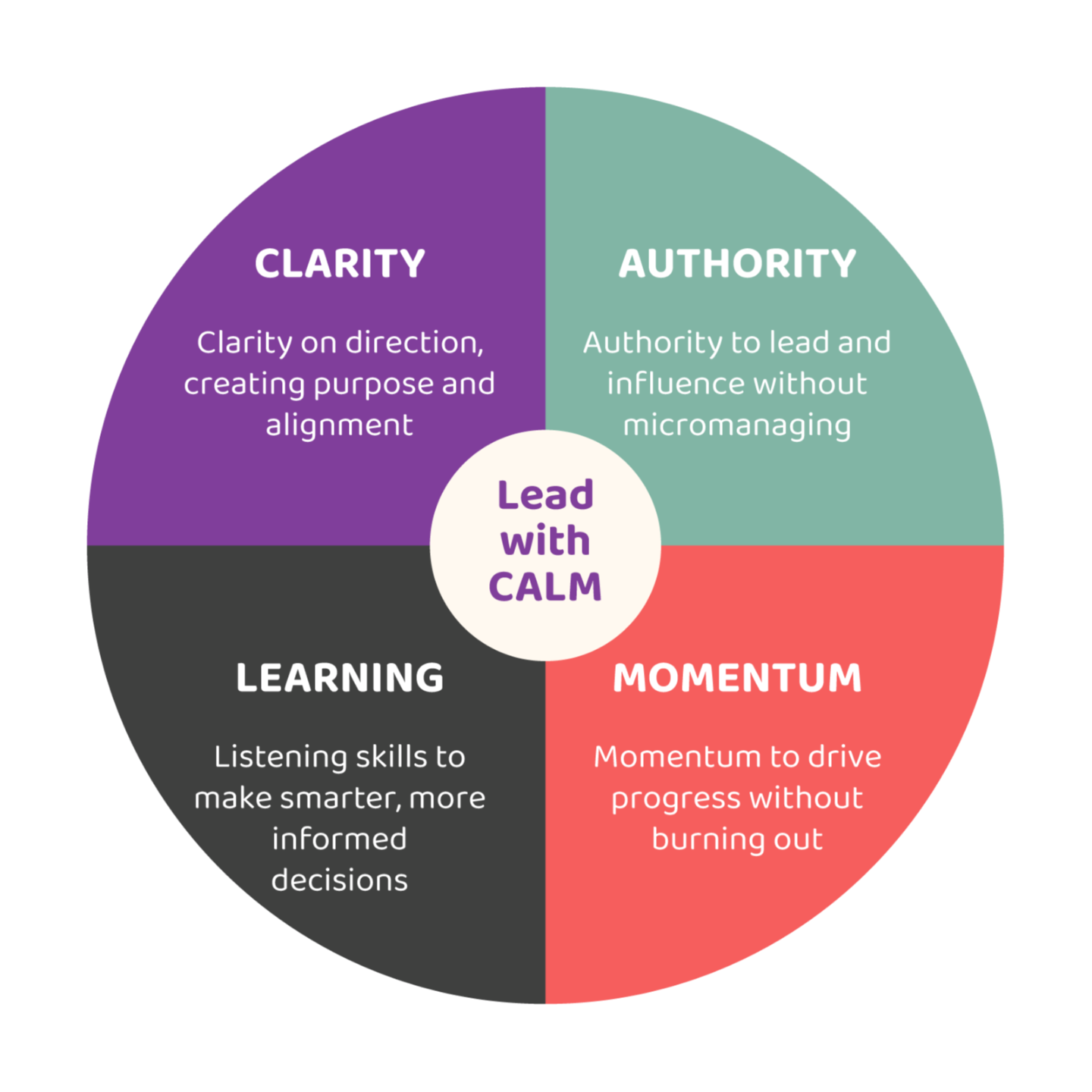Why Leadership Feels Harder Than Ever (And What to Do About It)
Let’s not sugarcoat it: product leadership in tech has never been more demanding.
Over the last six years, I have held six fractional CPO positions and helped over 1,000 product leaders. From what I can see, the role has become broader, the pressure higher, and the support smaller. Not the ideal scenario.
Even the most capable leaders tell me they feel like they’re constantly juggling chaos. They see shifting priorities, emotionally stoked stakeholder demands, tired teams struggling, and a gnawing sense that whatever they’re doing still isn’t quite enough.
If any of this sounds familiar, then worry not, you’re not alone. It’s not a personal failing.
Let’s step back and examine what is happening here. The environment and expectations have changed. The importance of purposeful leadership has grown.
So, what’s Changed
Over the last decade, I have witnessed six massive shifts that have reshaped the workplace, mainly for the better. When I started my career (in the 90s), the common culture inside companies was very different. Typically, the mindset was command and control. There was more focus on punctuality and hours worked than meaningful outcomes created. To put it bluntly, there was all management, not leadership.
Each of the following six changes has placed greater demands on leaders to lead, rather than manage. Unfortunately, many product leaders have not been given the support to master leadership. Very few product leaders have been taught how to lead; it is just expected to be learned through osmosis. Leading, not managing, is critical in fast-paced, high-stakes tech environments.
Leaders I coach tell me that being aware of the changes and refocusing their efforts has been a game-changer. They feel less stress and experience fewer stakeholder demands, and their team’s performance has improved. I hope this can help you too.
1. Remote & Distributed Teams
Global teams are now the norm. It is unusual to find a business where all the talent is in one city. Remote or distributed work is expected, which stretches leadership capabilities.
Building stakeholder and team trust requires more effort with less in-person communication. Ad hoc hallway conversations rarely occur. The over-reliance on Slack or MS Teams makes it very difficult to foster empathy between individuals.
Leaders are accountable for creating congruence or alignment across teams and stakeholders. It is your job to ensure people are paddling in the same direction. They must overcommunicate in remote environments because interactions are less intense and distractions are at their highest. For some leaders, it can be tempting to embrace the asynchronous communication methods and avoid repetitive conversations or meetings. It can feel like a productivity gain for the leader, but the quality of communication plummets; remember, communication is a two-way process. This leads to sharing only key information in a Notion or Google Doc, placing the responsibility on staff to have read and understood it. While writing things down to share is vital, it is not a replacement for discussing a message and being able to react in real time to respond and provide feedback.
Influence skills rely on communication and empathy. Roughly 80% of communication is nonverbal; a short Slack message does not convey the rolling of eyes, a deep breath, or a look of worry. Even video calls lose a significant level of non-verbal communication, but not as much as text-only. Leaders must put extra effort into influencing when in remote or distributed environments.
2. Demand for Emotional Intelligence & Psychological Safety
It might sound crazy, but caring more about the people in a business was not as popular just 15 years ago as it rightly is now. The 2012 Google Aristotle Project played a significant role in creating awareness among tech organisations of the importance of psychological safety. Leaders must make deliberate decisions to improve staff wellbeing and demonstrate EQ, not just IQ.
This is far more involved than simply managing outputs and measuring performance. Leaders must demonstrate cognitive empathy and invest time in understanding their staff’s emotions and needs. This doubles the value of receiving feedback and forces more attention when giving feedback.
Leaders I have worked with often shared that they feel like walking a tightrope when balancing performance and well-being. It should not be this way. Clear feedback can be given while also being considerate. The difficult conversations must still take place; don’t find excuses to avoid them.
3. Increased Uncertainty
Global political and economic changes, technological advancements (including AI), as well as the long-term effects of COVID-19, have increased the volume of layoffs, AI disruption, and economic instability.
This has created increased pressure at all levels; senior stakeholders want answers faster. Teams crave clarity and predictability. As a product leader, all parties have a stake in your work.
This makes it more critical than ever to share a clear product vision and strategy, thereby creating certainty in the area you can control. Sure, the roadmap might flex, but the vision needs to stay in focus. Your ability to align people and exploit the power of storytelling is vital. Many leaders I have interviewed for this newsletter have discussed the need to influence without formal authority. You can deliberately improve the situation and provide some level of stability in this wibbly wobbly world.
4. Inclusive, Non-Hierarchical Leadership
Over the last decade, the organisation chart and team structure have been completely turned on their heads. Many companies have recognised the enormous potential in diverse, cross-functional teams with shared power.
As a leader, this can feel harder, but it really is easier. Authority is earned, not given, which always leads to a better outcome. Success depends on the facilitation of the wonderful people in your organisation, not the command of them.
Your superpower is learning to distinguish between perspective and perception, enabling you to make faster and better decisions. Empathising with individuals' situations and managing their perception not only improves motivation but also allows you to influence teams positively.
5. Pressure to Prove Value
The pressure to prove value has gone full circle over time. We find ourselves in a place where return on investment (ROI) and profit are the focus of growth. It will change in time, and revenue or MAUs will become the most essential currency again, but right now it’s cold, hard cash.
The focus on profit can make it more difficult for product leaders to justify investment. Long-term strategic bets are under more scrutiny and require more convincing of those who manage the purse strings, typically the board of directors. This needs product leaders to frame discovery evidence as due diligence and tightly link it to the five-year business plan. The number of long-term bets funded is likely to decrease, so more care is needed in selecting those that have a better chance of success and offer larger prizes. This places a greater emphasis on strong product management, not less.
The shift in value measurement to ROI increases the focus on delivery efficiency. I coach many product leaders who face pressure to build the product, with the responsibility landing entirely on their shoulders, rather than being shared in a partnership with the technology leaders. This is politics, and needs to be unravelled as shipping new products is a team sport.
The product leader faces a new challenge in a world driven by rapid profits. You must protect space for creativity. If embryonic ideas are not given time to grow, your innovation will die. If your company is genuinely a product business, then innovation equals growth, and the reverse is also true. No innovation equals decline.
6. Identity Crisis in Product Leadership
The product manager and product leader roles have been evolving and changing shape nonstop throughout my 20+ year career. I love this, it means we are not standing still, instead we are continuously improving. However, there is a dark side; many leaders I coach have expressed an identity crisis. They feel their role has shifted from product flag bearer to team integrator.
My observation is that the product has always filled the white space between functions in order to improve the outcome for customers and achieve business goals. The white space in many organisations today is knitting the parts together to make a better whole.
The challenges include unclear authority, inconsistent expectations across functions within your organisation, and often being expected to lead without being given the necessary space. Partnering with stakeholders effectively is more critical than ever.
The leaders in Confidence In You, my flagship leadership development program, often have a breakthrough moment when we focus on leadership identity. Too frequently, your leadership identity or leadership signature has been given to you over the years of your career. Extraordinary leaders don’t accept this; they deliberately decide what they want their identity to be.
So… What Can You Do?
These shifts are fundamental and will not go away. However, you can lead effectively, sustainably, and with confidence if you evolve your leadership approach.
That’s where the CALM Leadership Method is practical. It’s not just a mindset. It’s a modern leadership model built for the modern environment.
Leading With CALM
When the pressure’s on, it’s tempting to default to control, speed, or noise. However, extraordinary product leaders understand that influence originates from a different place. That’s why the CALM method is a robust foundation: Clarity, Authority, Learning, and Momentum. These four pillars shift you from firefighting to leading with confidence. Clarity cuts through uncertainty by aligning your team on what matters most. Authority is about guiding through trust rather than micromanagement. Learning keeps you curious and connected, unlocking better decisions. Momentum helps you drive sustainable progress without burning yourself or your team out.
Think of it this way: Clarity gives direction. Authority earns trust. Learning builds insight. Momentum sustains progress. Together, they form a leadership approach that fosters calm even in the most chaotic environments. When you show up this way, people feel supported, confident, and focused. If you adopt CALM Leadership, you create the space to lead strategically rather than constantly reacting.
Final Thought
If you’re exhausted, you’re not broken; you’re leading in a broken system.
But there is a better way.
When you shift from reacting to leading with CALM, you reduce stress, improve team trust, and regain your sense of purpose.
PS: Want help putting CALM into practice? Join me at the upcoming Masterclass. You’ll leave with fundamental tools, renewed clarity, and an action plan to move forward.





Nice article Dave. Very clear description of the prevailing pressures in management!